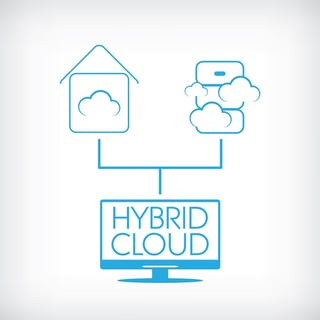 Is your organization among the 70 percent that have had to change their network infrastructure to support hybrid cloud? According to this statistic, you are far from alone. We recently shared three considerations that CIOs must pay attention to when deploying a hybrid cloud transition strategy. Here are five more items to focus on to make the most of your technology approach.
Is your organization among the 70 percent that have had to change their network infrastructure to support hybrid cloud? According to this statistic, you are far from alone. We recently shared three considerations that CIOs must pay attention to when deploying a hybrid cloud transition strategy. Here are five more items to focus on to make the most of your technology approach.
1. Prepare Your Virtual Fabric Infrastructure
Whether you are hosting servers in the cloud for resource load balancing, burst computing, application hosting, or disaster recovery, you will be working within virtual environments. You should already have a virtual private cloud on premise and, if at all possible, you should choose a cloud provider that supports similar virtual configuration types in order to make the migration and management processes as smooth as possible.
2. Deploy a Hypervisor
To prime your network for hybrid cloud, you should also utilize a Hypervisor Management console to manage all of your servers at all locations from a single pane of glass. You can then group and manage your computer resources by location, and create host groups to manage workloads with similar workload, resource and service quality requirements.
3. Prime for Storage Management
Nothing is more critical than your data. Therefore, it is imperative to decide which types of data will remain on premise and which will reside in the cloud. This means you will need to go about the cumbersome but necessary step of classifying your organization’s data. For example, confidential data should not be hosted in a multi-tenant environment and some data may have to stay on premise due to compliancy regulations.
4. Keep an Eye on Latency
Latency is a big factor in designing storage architecture within a hybrid environment. Data that must be accessed both publicly and internally means potential large data volumes may incur transfer delays. To prevent this, a series of WAN optimization tools may be required such as:
- Caching – This operates in the same manner as a proxy server in which large files such as images and videos are cached on premise in order to be delivered locally and save bandwidth. You can also utilize a smart storage gateway appliance which will retain frequently accessed files locally while keeping less utilized data in the cloud. As demand for this data changes over time, so will the storage location.
- Deduplication – If you are utilizing a hybrid cloud for your backups and disaster recovery, deduplication will remove a great deal of unnecessary traffic during the backup process. It does this by performing only a single full backup of a file and then processing only the modified portions of that file over time.
- Compression – This reduces the bandwidth demands of your data transfers by utilizing a number of techniques to reduce the size of your files, even removing unnecessary portions of designated files.
5. Manage Users and Authentication
If you are deploying a hybrid cloud strategy, chances are you are managing your user database, such as active directory on premise while retaining a copy in the cloud. This will require a server to manage the synchronization process in order to modify user objects and change passwords in the cloud. You should have some type of password management tool so users can modify their passwords in the cloud when they are off-site.
If you are hosting applications and resources in the public cloud, you will need some sort of Identity Management and Access management system to allow users to use the same identification data to obtain access to the networks of all enterprises in the hybrid conglomerate.
If you’re ready to implement the hybrid cloud at your organization, that’s great news! Contact WEI’s experienced team of engineers for a personalized assessment and advice for a smooth transition. To learn more about hybrid cloud, check out our white paper, “Using a Hybrid Cloud to Augment and Enhance Your Existing Network.”











